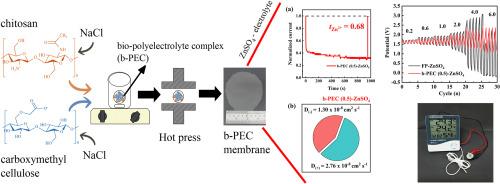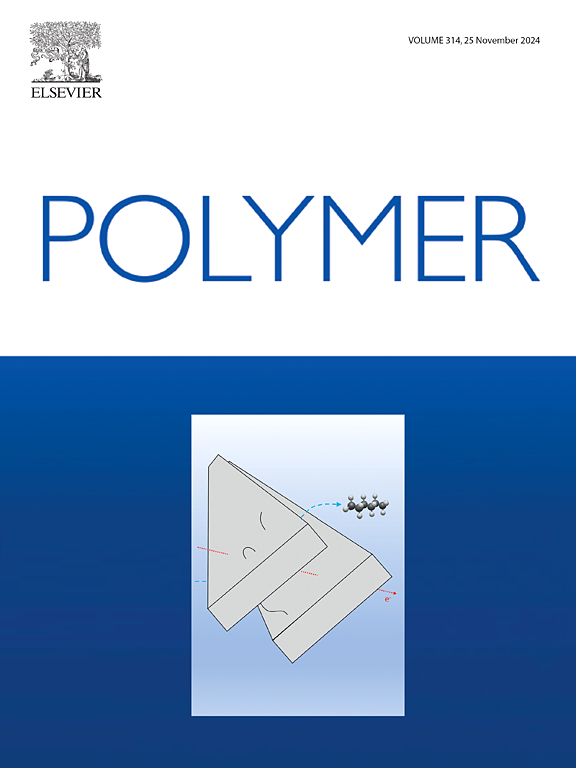Preparation of bio-polyelectrolyte complex membrane from carboxymethylcellulose and chitosan as a selective alternative zinc-ion battery separator
IF 4.1
2区 化学
Q2 POLYMER SCIENCE
引用次数: 0
Abstract
Zinc-ion batteries (ZIBs) are gaining recognition as eco-friendly and easy-to-process energy storage solutions. Separators, which are crucial for performance, have received less attention. Separators play a vital role in facilitating efficient zinc-ion transfer and ensuring uniform ion distribution to minimize dendrite formation. Polyelectrolyte complexes (PECs), with their charged functional groups, show promise as separators. This study developed bio-polyelectrolyte complex (b-PEC) membranes using carboxymethylcellulose (CMC) and chitosan through the hot-press method. Adding NaCl during preparation activated functional groups and enhancing structural integrity. Without chemical crosslinking, the b-PEC membranes retained the original properties of the constituent polyelectrolytes. Chitosan functional groups reduced Zn2+ diffusion and immobilized SO42−, while CMC facilitated Zn2+ transport, promoting uniform ion distribution and reducing dendrite formation. The optimized b-PEC (0.5)-ZnSO4 membrane achieved an ionic conductivity of 9.29 × 10−3 S cm−1 and a zinc-ion transference number of 0.68, highlighting its potential as a ZIB separator.


求助全文
约1分钟内获得全文
求助全文
来源期刊

Polymer
化学-高分子科学
CiteScore
7.90
自引率
8.70%
发文量
959
审稿时长
32 days
期刊介绍:
Polymer is an interdisciplinary journal dedicated to publishing innovative and significant advances in Polymer Physics, Chemistry and Technology. We welcome submissions on polymer hybrids, nanocomposites, characterisation and self-assembly. Polymer also publishes work on the technological application of polymers in energy and optoelectronics.
The main scope is covered but not limited to the following core areas:
Polymer Materials
Nanocomposites and hybrid nanomaterials
Polymer blends, films, fibres, networks and porous materials
Physical Characterization
Characterisation, modelling and simulation* of molecular and materials properties in bulk, solution, and thin films
Polymer Engineering
Advanced multiscale processing methods
Polymer Synthesis, Modification and Self-assembly
Including designer polymer architectures, mechanisms and kinetics, and supramolecular polymerization
Technological Applications
Polymers for energy generation and storage
Polymer membranes for separation technology
Polymers for opto- and microelectronics.
 求助内容:
求助内容: 应助结果提醒方式:
应助结果提醒方式:


